Click here to jump down to our update: What We’ve Learned About the Update for Our Agency and Our Clients
On March 5, 2024, Google announced the March 2024 core update, which is “designed to improve the quality of Search by showing less content that feels like it was made to attract clicks, and more content that people find useful.”
At the same time, they also announced their new spam policy, which aims “to better handle the practices that can negatively impact Google’s search results.”
In this article, we’ll summarize the key aspects of the Google algorithm core update and offers tips for improving site rankings in light of these changes.
What This Google Core Update Is About
The purpose of Google’s March 2024 core update and new spam policies is to improve search quality by prioritizing useful content and deterring poor content, such as click-bait titles or obviously AI-generated content.
According to Neil Patel: “Now what I think is going to happen is you are going to see it harder to rank from just producing content that contains regurgitated information, which is what AI mainly creates.”:

And the results of this:

Note that the full rollout may take up to a month. Check here to see the current status and/or when the update is finished.
More Details About the Google Core Update
The March core update is comprised of two parts:

March 2024 Core Update
The March 2024 core update is more complex than Google’s usual core updates, as it involves changes to multiple core systems. This update entails significant algorithmic changes that impact many sites, leading to fluctuations in rankings, and focuses on evaluating content helpfulness through innovative signals, thus moving away from single-system reliance.
Here, “innovative signals” refers to new and advanced indicators or factors – such as the machine learning model – that Google’s algorithm uses to better assess the helpfulness and quality of content. By leveraging machine learning technology, Google can better analyze and rank content based on its relevance and value to users. This new model moves away from traditional metrics like keywords and backlinks and towards a more sophisticated evaluation process.
Note: Google will stop announcing new helpful content updates, since the helpful content system has been incorporated into this March 2024 core update system.
March 2024 Spam Update
Regarding the new spam policies – they target three practices: expired domain abuse, scaled content abuse, and site reputation abuse to combat spammy tactics.
“Where an expired domain name is purchased and repurposed primarily to manipulate Search rankings by hosting content that provides little to no value to users.
For example, someone might purchase a domain previously used by a medical site and repurpose that to host low-quality casino-related content, hoping to be successful in Search based on the domain’s reputation from a previous ownership.”
“When many pages are generated for the primary purpose of manipulating Search rankings and not helping users. This abusive practice is typically focused on creating large amounts of unoriginal content that provides little to no value to users, no matter how it’s created.
A few examples of scaled content abuse include:
- Using generative AI tools or other similar tools to generate many pages without adding value for users.
- Scraping feeds, search results or other content to generate many pages (including through automated transformations like synonymizing, translating, or other obfuscation techniques), where little value is provided to users.
- Creating many pages where the content makes little or no sense to a reader but contains search keywords.”
“When third-party pages are published with little or no first-party oversight or involvement, where the purpose is to manipulate Search rankings by taking advantage of the first-party site’s ranking signals.
For example, many publications host advertising content that is intended for their regular readers, rather than to primarily manipulate Search rankings. Sometimes called ‘native advertising’ or ‘advertorial,’ this kind of content typically wouldn’t confuse regular readers of the publication when they find it on the publisher’s site directly or when arriving at it from Google’s search results.”
Violations may result in penalties or removal from search results.
Note: Google’s “new policy doesn’t consider all third-party content to be a violation, only that which is hosted without close oversight and which is intended to manipulate Search rankings.”
You may also like: Improving Site Ranking After the Google Core Update (Nov. 2023)
Impact of the Core Update
Because this update aims to reduce low-quality, unoriginal content and prioritize more useful and relevant content in search results, it’s had a significant impact on a lot of websites. Many are experiencing fluctuations in rankings and some are even being deindexed from Google Search.
Websites are facing penalties or are being removed from search results for violations such as:
- Hosting third-party, low-value content primarily for ranking purposes
- Purchasing expired domains to boost the search ranking of low-quality content
Warning: this is EARLY DATA and everything could change over the course of this month (not to mention after May 5).
But I am looking at week-over-week absolute winners vs. losers via @sistrix visibility index data.
The thing that stands out to me the most: the losers are losing… pic.twitter.com/oeCT2VzanI
— Lily Ray 😏 (@lilyraynyc) March 12, 2024
Has Your Site Been Impacted by This Update?
The easiest ways to check if your site was impacted by the Google update, is to monitor your site in Google Search Console and look for dips in the search results performance.
We noticed that our site took a small dip from this core update but then quickly rebounded:
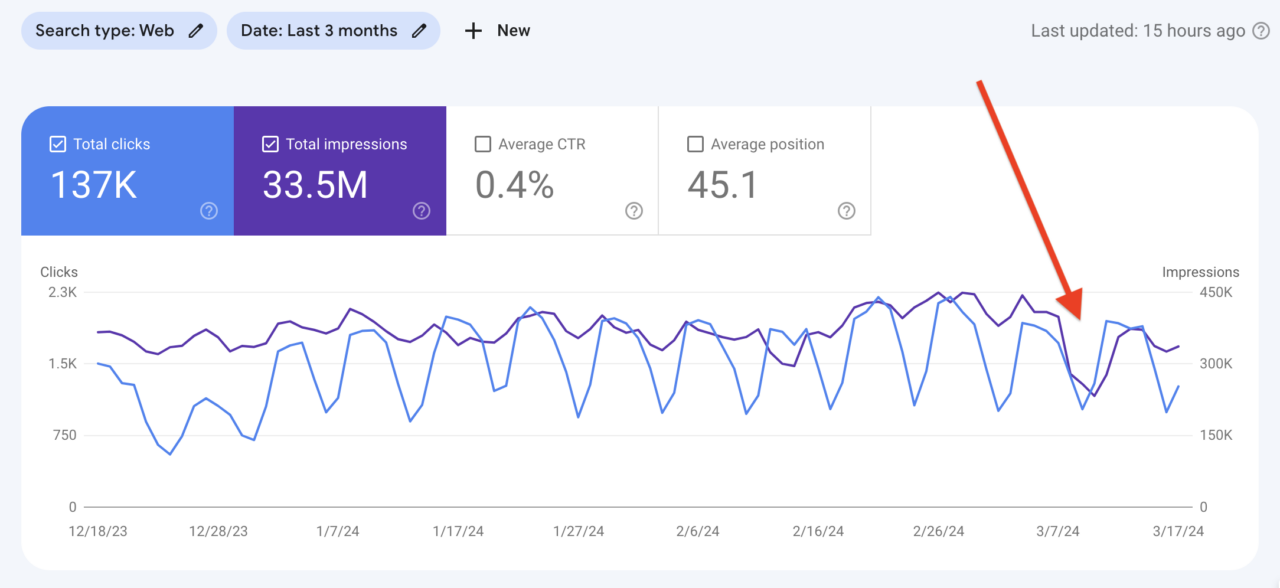
Or you can look for your website in Google by typing “site:website.com” and see if you are still showing up in the search results:

Another place to check if your site was impacted by the Google update is Semrush Sensor. If you are tracking your website with this tool, you’ll get specific insights rather than just the overview.
Here’s how Semrush calculates the Sensor score: “We check the search results for a fixed set of keywords on a daily basis and measure how much has changed at the end of the day. The exact method is a proprietary formula, but the total value reflects the total search volatility for the day.”
This chart is for all categories/industries – as you can see, overall there have been “position changes for numerous sites”:

In contrast, this chart is for a client of ours in the technology category – as you can see, for them this is just “another ordinary day”:

And this chart is for a client of ours in the food and drink category – as you can see, for them “it’s a Googlequake”:

Actions/Advice for This Update
The advice here is simple and common sensical: Produce genuinely useful content, align with Google’s guidelines, and monitor rankings during and after the update rollout.
If you’ve been doing this, then Google’s advice is a no-brainer:
“There’s nothing new or special that creators need to do for this update as long as they’ve been making satisfying content meant for people.”
If your site was impacted by the March 2024 core update, here are a few things you can do to recover:
- Fix the Problem Pages: The first step is to identify the pages that have been negatively affected by the update and then get to work on improving them by making them better quality, higher relevance and with more authority. Create fresh, high-quality content that is well-researched, accurate and provides value to your readers.
- Improve Technical SEO: Fixing technical SEO aspects like site speed, user experience and overall website performance can also positively impact rankings.
- Optimize the Content for User Intent: This is kind of obvious, but you just need to match your content with user intent. How do you do this? By providing valuable and relevant information that answers the users’ queries.

For sites that are no longer ranking as well, read Google’s creating helpful, reliable, people-first content help page to learn how to avoid creating search engine-first content.
Remember, recovery involves focusing on high-quality content and user satisfaction:
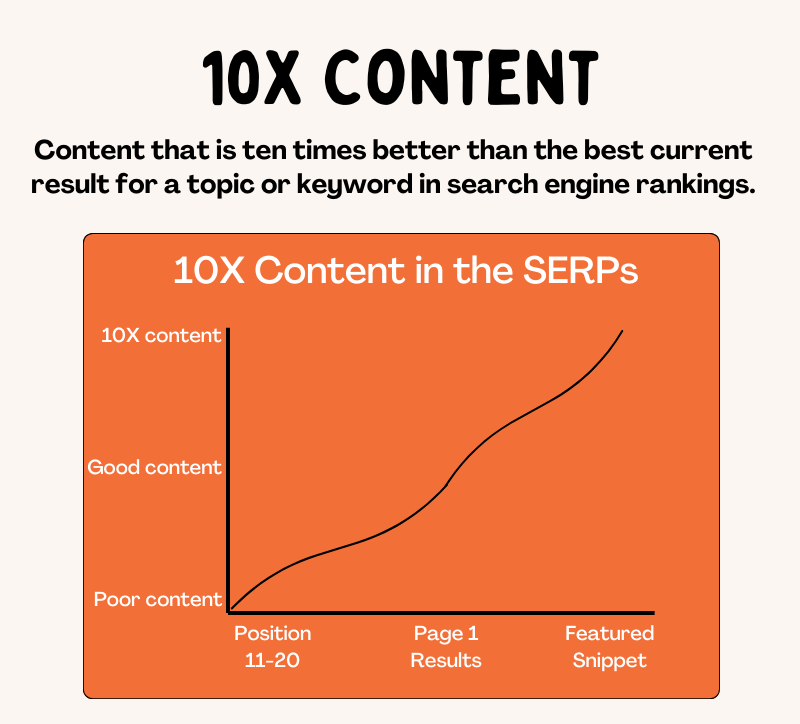
You may also like: Google Search Trends Decoded: What Content Truly Wins?
Last Word on the Google Core Update
Google is sending a very loud message regarding its March 2024 core update plus new spam policy about improving the quality of search results by prioritizing content that is genuinely useful to users.
For website owners and content creators, the solution is clear: Just focus on producing great content for people, not algorithms. That means exercising caution when it comes to writing click-bait titles or using AI-generated content.
While AI can be a powerful tool, it’s essential to ensure that such content is carefully reviewed, refined and supplemented with human insight (and editing!) to meet Google’s standards for quality and usefulness.
If you’re already producing content that genuinely serves the user’s needs and adheres to Google’s enhanced quality standards, then you shouldn’t have anything to worry about.
Summary: The top 5 things you need to know about Google’s March 2024 core update are:
- Significant Overhaul: The March 2024 core update represents a significant overhaul of Google’s search algorithms, and its goal is to enhance the user experience by prioritizing original, high-quality content.
- Targeting Unhelpful Content: The update targets unhelpful, low-quality and unoriginal content, with the goal of reducing its presence in search results by up to 40%.
- Impact on Rankings: Websites featuring unhelpful or low-quality content are at risk of ranking lower, while those dedicated to producing high-value, original and user-centric content may see positive changes in their search rankings.
- Focus on Content Quality: The update emphasizes the importance of content quality assessment, and aims to prioritize web pages that genuinely provide valuable information for users. Websites with minimal engagement or unsubstantial value may see a devaluation in rankings.
- Rollout Complexity: Google’s core updates are comprehensive and affect multiple systems within its ranking system. The rollout of the March 2024 update is expected to take about a month, leading to ranking volatility during this period.
If your website was affected by this core update, Single Grain’s SEO experts can help you recover your ranking and future-proof your site!👇
Update 3 Months Later . . .
What We’ve Learned About the Update for Our Agency and Our Clients
Since the early March 2024 core and spam updates, there has been a second spam update in June 2024. Google hasn’t revealed any specifics, but it’s believed to be a general and broad spam update that’s separate from the site reputation abuse policy changes announced during the March 2024 core update.
The June 2024 spam update started on June 20, 2024, and took exactly 7 days and 1 hour to implement, according to the Google Search Status Dashboard:
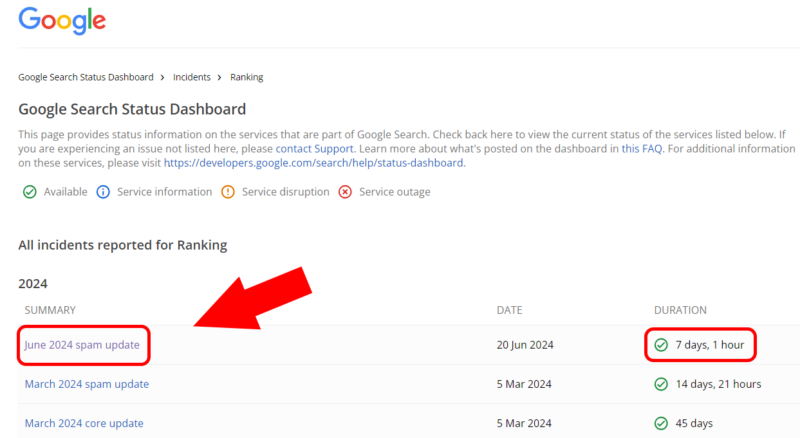
Many industries are still experiencing volatility regarding SERP rankings on both desktop and mobile because of these three updates. Most of what we are seeing in fluctuations we can attribute to the new spam policies as well as the core update taking effect (with all of them basically targeting the same thing: useful content).
We first saw ranking shifts on March 8th and 9th, then some reversals on March 12th and then more movement on March 15th. We then saw some extreme SERP volatility on June 28th after the second spam update rolled out, and that’s also starting to stabilize. In general, you can see the SERP volatility trend here for the last 30 days for all categories:
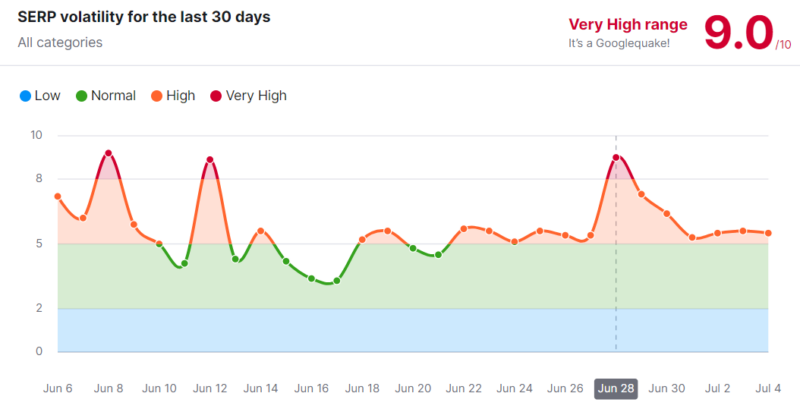
On June 28th, this number was 9.0 (“It’s a Googlequake!”), but it has since come down a bit.
Industries most affected (these are anything over a 9 on Semrush’s scale) include:
- Arts & Entertainment
- Business & Industrial
- Computers & Electronics
- Finance
- Food & Drink
- Games
- Health
- Home & Garden
- Internet & Telecom
- Jobs & Education
- Shopping
- Online Communities
- News
- Sports
The SERP features most affected include:
- AI Overview
- Reviews
- Image
- Video carousel
- Local pack
- Hotels pack
- Recipes
- See results about
- Related searches
- Popular products
- Ads top
After digging into our clients’ SEO strategies and the terms we are tracking for them, we saw that we have one client that’s trending right at 8 as the most volatile amongst our clients, while many of our other clients are actually quite stable. We’ve heard that some sites were unfairly affected by the spam update, but this doesn’t seem to be the case for our clients – so no manual actions! The volatility we are seeing has more to do with the core update.
After reviewing all accounts’ performance on tracked terms for the past 60 days, there is an interesting mix of shifts on Share of Voice, Estimated Traffic and Average Position. These are a few of the top metrics that Semrush aggregates:
- Share of Voice: The proportion of exposure or visibility a brand has online compared to its competitors.
- Estimated Traffic: The projected number of visits a site might receive based on its current search engine rankings.
- Average Position: The average ranking position of the website’s search terms in the SERPs.
There were increases or decreases in these metrics, but no uniform trend or pattern emerged. However, on a few accounts that were noted as not experiencing volatility, there were notable gains in these three metrics:
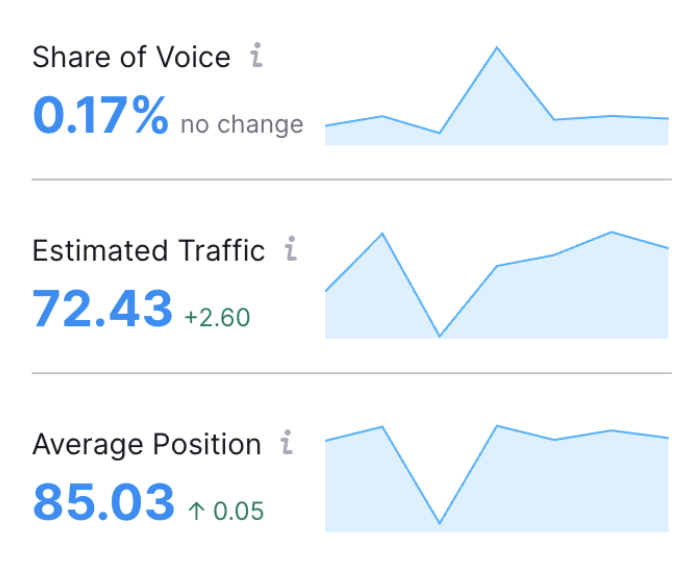
This suggests that while these accounts remained relatively stable, they still managed to perform better in terms of visibility, traffic, and search rankings.
But maybe it’s just still too soon to tell the true effects of the core update in combination with the two spam updates. There could be additional corrections Google wants to make to ensure that the SERP changes align with their goals. But for now it remains to be seen until we know when the update is compete.
Here are a couple more broad insights worth noting.
Widespread Deindexing
A significant number of websites were deindexed due to their reliance on AI-generated content or otherwise low-quality content. While the exact number of deindexed websites is not provided, one analysis of over 49,000 sites found that 837 were removed from Google’s index.
Some of these sites experienced massive losses, both in terms of traffic and advertising revenue. Niche Site Metrics reports that 1.7% of sites in their database were completely deindexed:
- 837 sites deindexed
- Over 20,756,785 monthly organic traffic visits gone
- Estimated $446,552 per month in lost display ad revenue
But a few days later, they checked those deindexed sites again, and found that 21 of them had been re-indexed by Google.
I ran my script again to check the sites that were deindexed and 21 of them are showing pages indexed in Google again.
The big winners were fresherslive·com and oldtimemusic·com who have 5m and 2.5m pages indexed.
Here’s the full list:
fresherslive·com – 5,050,000 pages… pic.twitter.com/zgpm1toudt
— Ian Nuttall (@iannuttall) March 11, 2024
Recovery Strategies
Websites impacted by the update have been advised to eliminate all unhelpful content, such as thin content and AI-generated pages created en masse. Recovery efforts should focus on providing well-researched, user-oriented content that aligns with Google’s helpful content guidelines.
For some, this might mean a significant overhaul of existing content or even acquiring a new domain if they’ve been penalized for using expired domains to host low-quality content. If your site was impacted by this recent update, take action to fix it – but keep in mind that you might not see improvements until the next core update.
For websites that were impacted by the Google Core Update 2024, here are several recovery strategies we recommend:
- Audit and Remove Low-Quality Content: Conduct a thorough audit of your website to identify and remove or improve low-quality, thin or unhelpful content. Make sure all content on your site provides real value to users (not just to Google) and meets their search intent. This includes getting rid of duplicate content, filler content and content that is overly optimized for SEO.
- Improve Content Quality and Depth: Improve the quality of your existing content. This means making sure that all blog posts are well-researched, written by experts or well-informed writers, and thoroughly cover the topics at hand. It’s also important to update any outdated articles.
- Focus on User Experience: Enhance the overall UX on your website. This includes optimizing page load speeds, improving navigation and making your site mobile-friendly. Also, review and modify any intrusive interstitials or aggressive ads that could detract from user experience.
- Adjust SEO Practices: Refrain from manipulative SEO tactics such as keyword stuffing, cloaking or using purchased links. Instead, focus on ethical SEO practices that align with Google’s guidelines. This includes using natural language, satisfying user queries with relevant content and making sure all SEO enhancements (like meta tags) accurately reflect the content.
- Use E-E-A-T Principles: Your articles should adhere to Google’s Experience, Expertise, Authoritativeness and Trustworthiness (E-E-A-T) guidelines. Showcasing the credentials of content creators, citing reputable sources and providing evidence-based content can help establish your site’s credibility.
If you take appropriate action – which means following SEO best practices and staying away from bad SEO advice – you’ll help your website recover from the impacts of this recent update and improve its overall visibility in search rankings.
Nothing to see here, just another small publisher completely obliterated by Google for following bad SEO advice.
Imagine starting a business, building a website, quitting your job, hiring people, working, working, working, and then BOOM.
Everything you’ve worked for is gone.… pic.twitter.com/p775q0yB1o
— Kristi Hines (@kristileilani) April 17, 2024
Final Word 3 Months After the Google Core Update 2024
Three months after the March 2024 core update shows the critical importance of adapting to Google’s evolving guidelines and underscores the penalties for not doing so. It’s also super important for website owners and marketers to focus on quality content and user experience as core components of their SEO strategies – on an ongoing basis. Slapping a bandaid on an issue isn’t going to work.
This news isn’t new, of course, it’s just being heavily emphasized now.
This is why it’s important to follow good SEO practices. If you’re not an SEO professional, it’s probably a good idea to hire one.
If your website was affected by this core update, Single Grain’s SEO experts can help you recover your ranking and future-proof your site!👇



